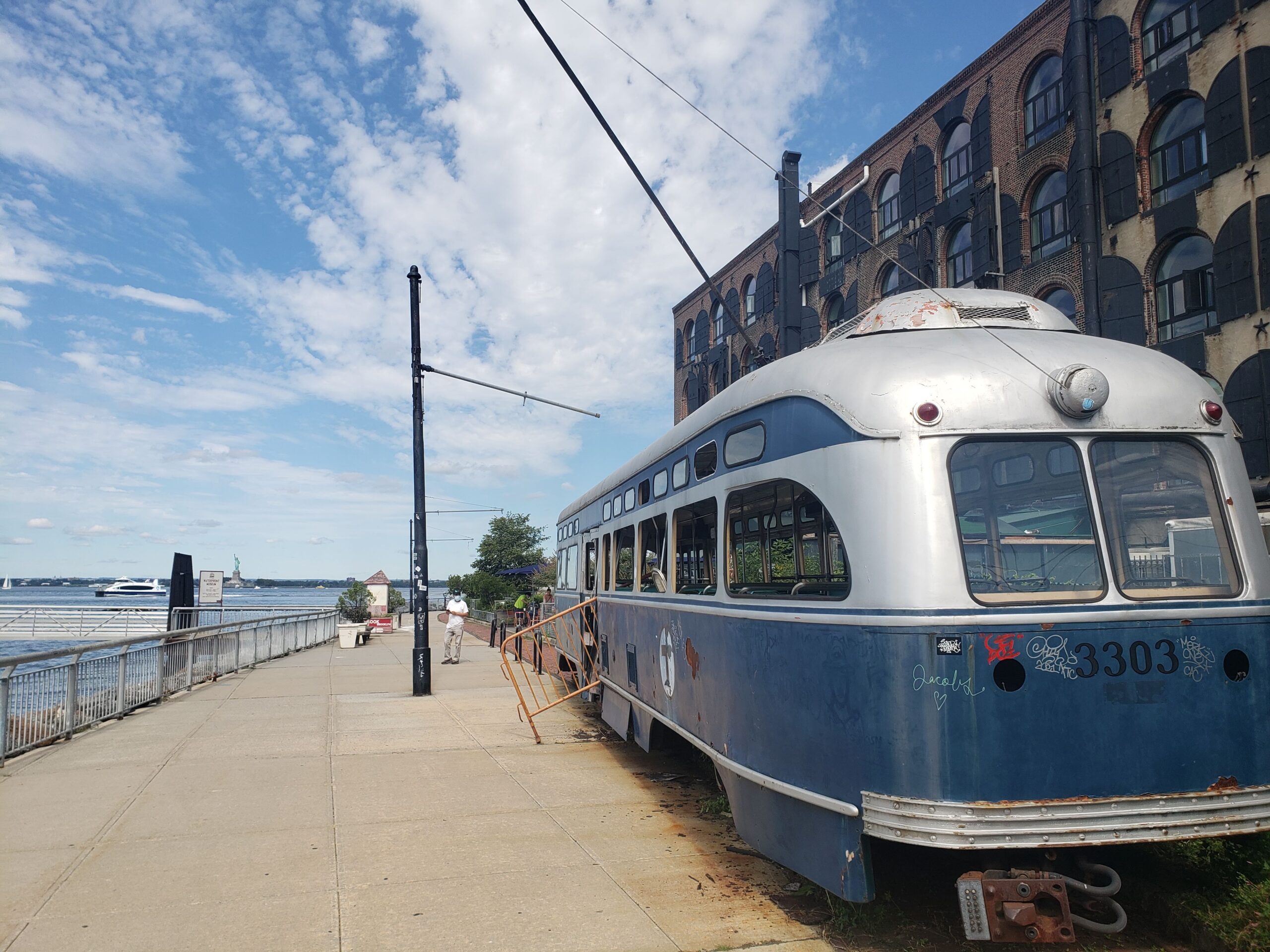For a lot of New Yorkers, Red Hook may as well be on Mars. The neighborhood is in northwest Brooklyn, not far from the southern tip of Manhattan, but it has no subway service. It’s surrounded on three sides by water, and on the fourth side, the Brooklyn-Queens Expressway separates Red Hook from its neighbors. It has historically been neglected – Hurricane Sandy hit the area hard in 2012, flooding nearly the entire neighborhood and leaving the Red Hook Houses, one of the city’s largest public housing complexes, without power and water for months.
However, Red Hook is just a ten-minute bus ride from the nearest subway station, not far from other Brooklyn neighborhoods like Brooklyn Heights and Park Slope. It has a unique feel, sometimes seeming more like a quiet fishing town than a New York City neighborhood. Red Hook’s location on the water means it has industrial history, beautiful views, and fresh seafood. It can be a great place to spend an afternoon, and on summer weekends it is increasingly busy with day-trippers from elsewhere in the five boroughs.
Getting There
The New York subway is so extensive that those few neighborhoods that it doesn’t serve can seem inordinately far away. Mayor De Blasio’s attempts to build a light rail line connecting Red Hook to other waterfront neighborhoods faltered, and concepts like extending the 1 train from Lower Manhattan to the area remain pie-in-the-sky.
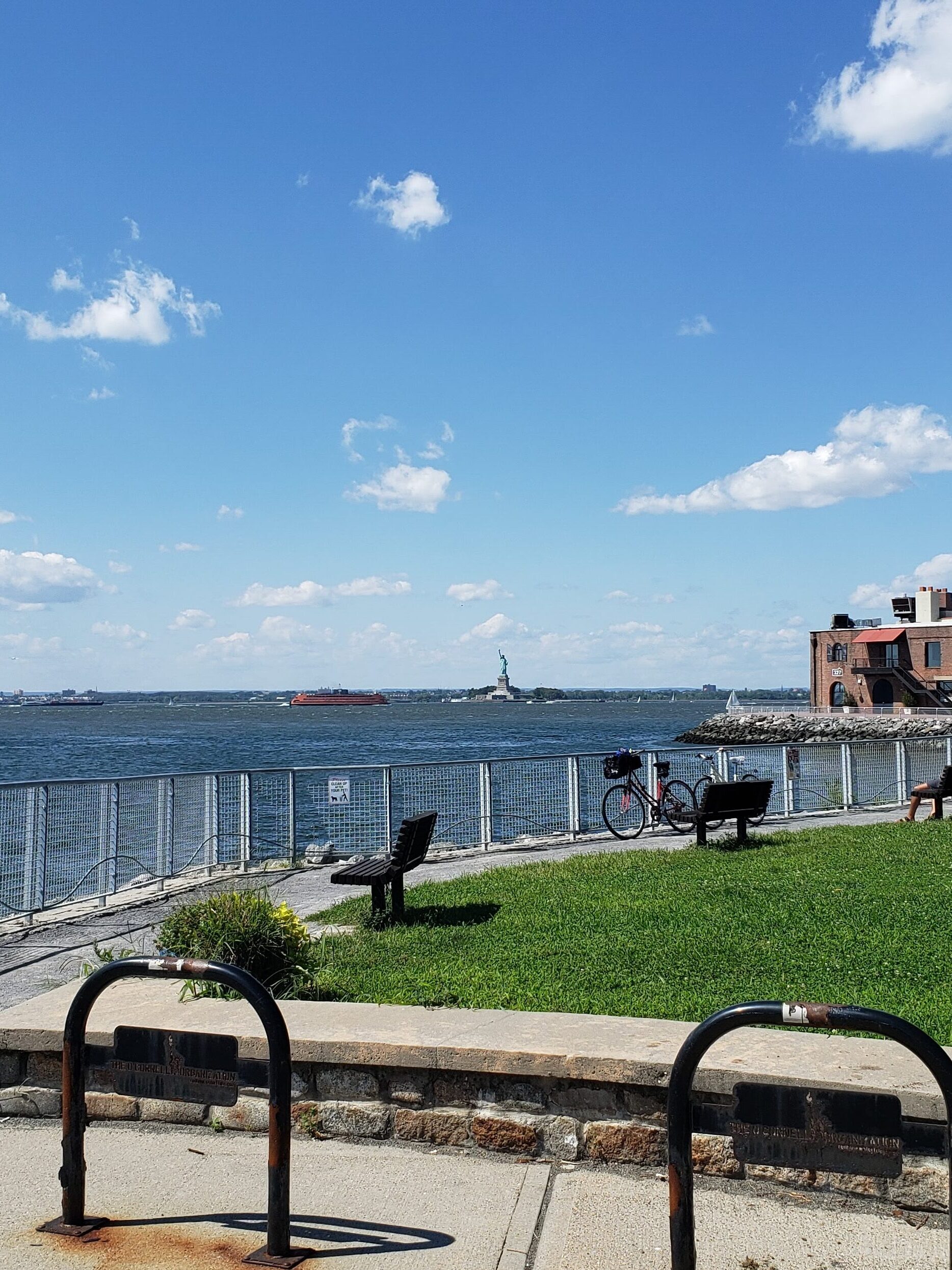
However, MTA buses make it easy to get to Red Hook. The closest subway station is Smith-9th Street on the F and G lines in Gowanus – from there, the B57 and B61 buses both travel to the center of Red Hook, and you rarely have to wait more than a few minutes. From Red Hook, the B61 continues up to Downtown Brooklyn, providing access to many more subway lines a little farther away.
The New York City Ferry system also stops in the neighborhood, but in a somewhat inconvenient location. However, the New York City Ferry is not the only waterborne transport to come to Red Hook – one of the more unique transportation services in New York is the free Ikea ferry that carries passengers from Midtown and Lower Manhattan to the Ikea in Red Hook on Saturdays and Sundays.
Finally, biking is a great way to get to Red Hook. A separated bike path travels along the waterfront between the neighborhood and Brooklyn Bridge Park, with plenty of Citibike docks if you don’t have your own. The route between Red Hook and Gowanus/Park Slope is a little more confusing and lacks protected bike lanes, but it’s a quick ride.
What to Do in Red Hook
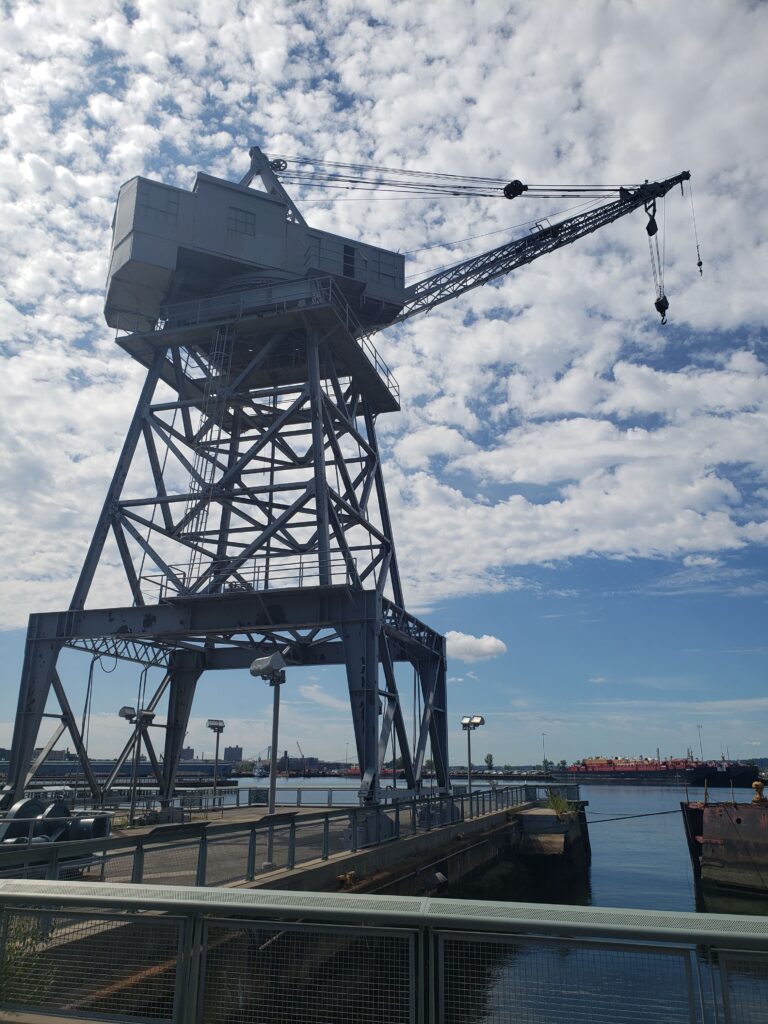
A visit to Red Hook is all about the water. I often like to start towards the southeast corner of the neighborhood at one of the major landmarks in the area: that same Ikea that has its own ferry service. Behind the store is Erie Basin Park, which the city required the company to build as a condition of its development approvals. The park provides views of Brooklyn’s industrial waterfront, including the hulking old Red Hook Grain Terminal to the east. Inside the park are plaques about the area’s maritime heritage next to old, preserved shipping cranes on piers extending into the harbor.
Heading west a couple blocks along Beard Street then south on Van Brunt, you’ll reach a multi-block-long stretch of beautiful 19th century warehouses along the water. Unlike the warehouses in other neighborhoods like Dumbo, these have not been converted to residential or office space – rather, they are still used for small industrial uses, along with some shops and art galleries.
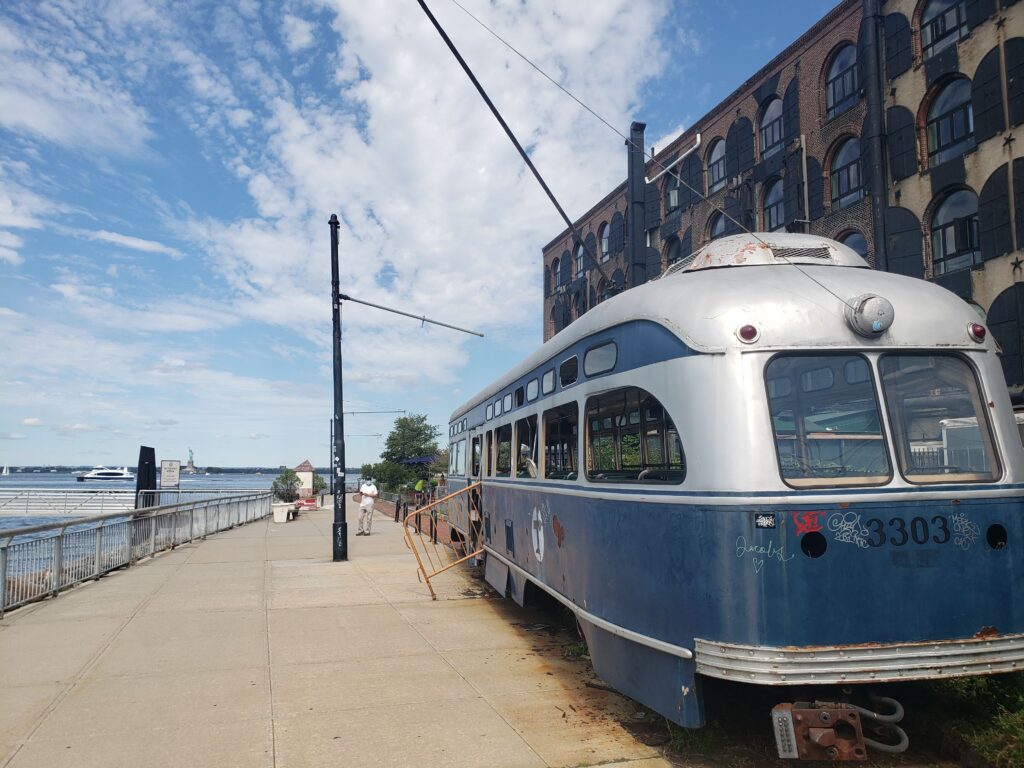
One-block-long Reed Street is home to two of Red Hook’s most popular restaurants: Brooklyn Crab and Hometown Bar-B-Que. The block can be mobbed on summer weekends, when it is closed to traffic. Brooklyn Crab serves amazing seafood and drinks on multiple levels of seating, with views out over the water from the top.
To the south, across the parking lot, is another historic warehouse with a grocery store on the ground floor. Behind this warehouse is a waterfront promenade with a rusty old trolley car sitting incongruously on a section of disused tracks. If you look closely, you’ll notice that the trolley car’s signs and paint are from Boston. Rather than a relic of Brooklyn’s streetcar history from the early 20th century, this is a remnant of a brief attempt by a local resident to run a novelty historic streetcar line through the neighborhood in the early 2000s. The idea didn’t pan out, but this vehicle remains.
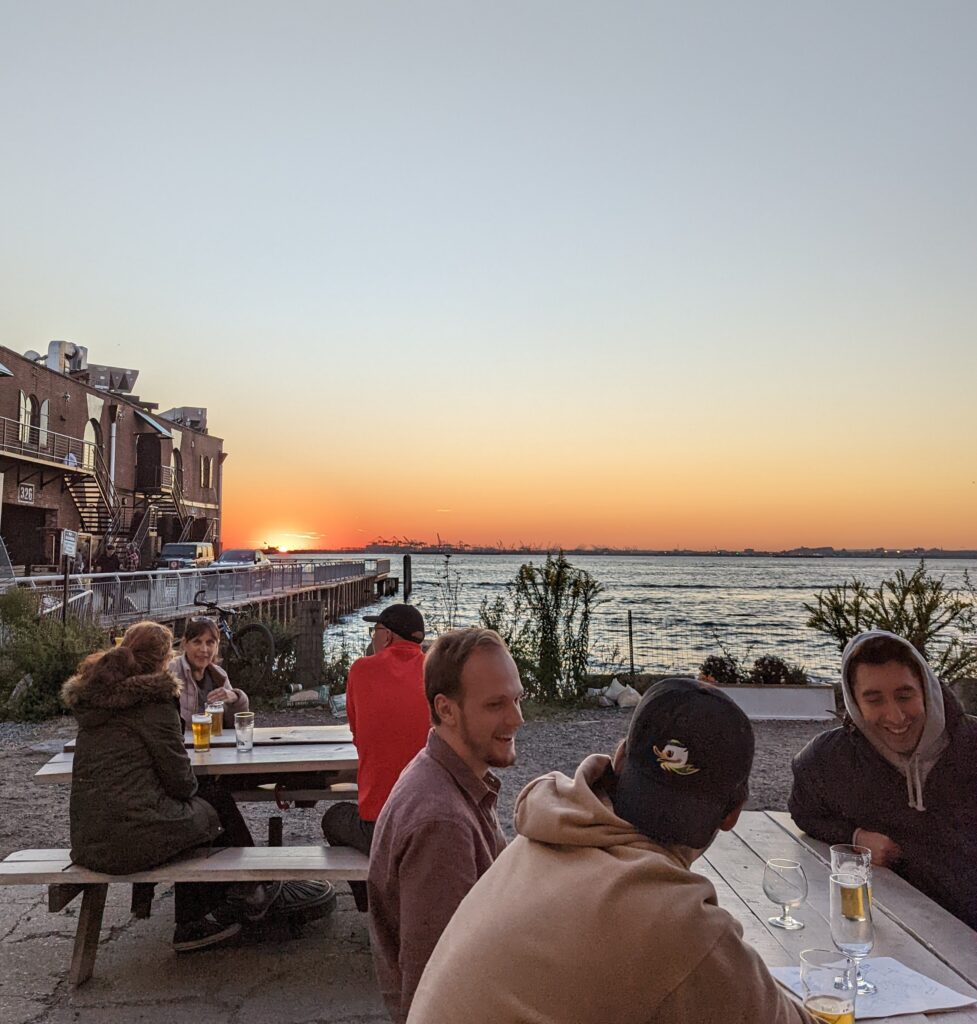
Around the corner is another small waterfront park at Pier 44 that juts out into the water with panoramic views. Docked at the park is an early 20th century railroad barge containing the Waterfront Museum. Although it is generally only open limited hours (Thursday evenings and Saturday afternoons), the museum often hosts special performances.
Just north of this is the Liberty Warehouse complex. This includes one of my favorite places in the neighborhood, Strong Rope Brewery, which is at the end of a warehouse right on the water with a head-on view of the Statue of Liberty across the harbor. Also in the complex are the Red Hook Winery and Steve’s Authentic Key Lime Pie.
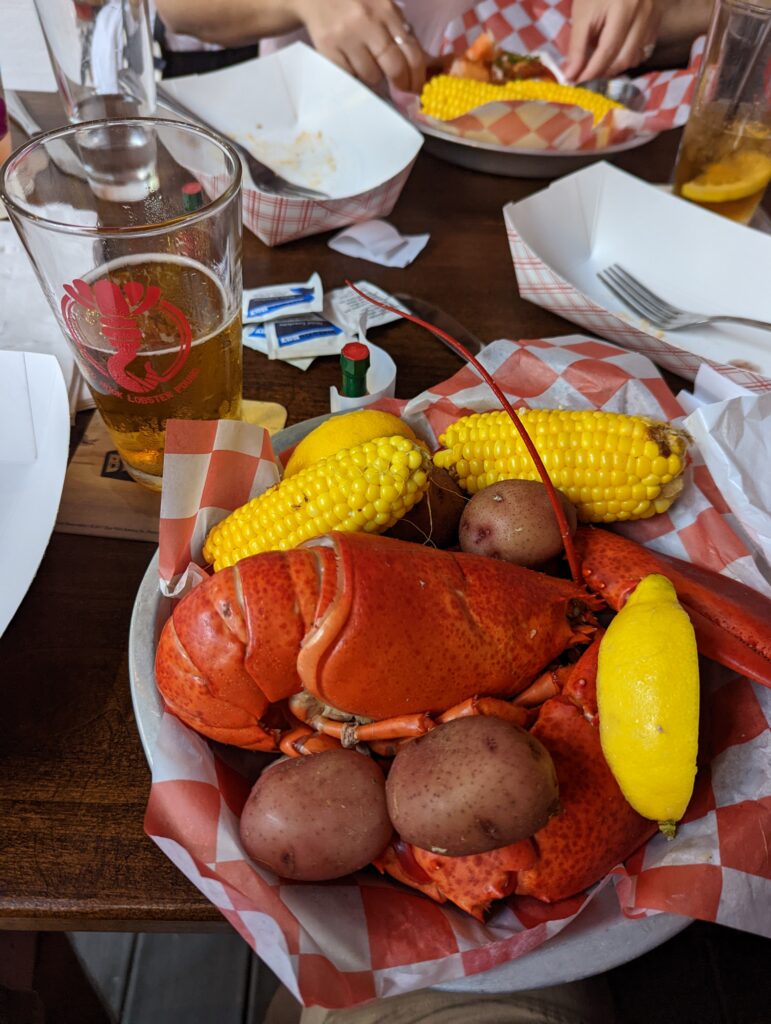
Heading back inland, there are other fun businesses to check out. Widow Jane Distillery offers weekend tours and cocktails at its bar, Botanica, in an old brick building at the corner of cobblestoned Coffey and Conover Streets. (A few blocks farther east is Van Brunt Stillhouse, another distillery with open for tastings on the weekends). Van Brunt Street is dotted with bars, restaurants, and stores, including Somtum Der, an Isaan Thai restaurant from Bangkok with an outpost in the neighborhood.
Several blocks farther up Van Brunt is the Red Hook Lobster Pound, which competes with Brooklyn Crab for the title of Red Hook’s best shellfish. The Black Flamingo down the block is a coffeeshop with an amazing backyard, across the street from the Brooklyn Ice House, a classic dive bar.
